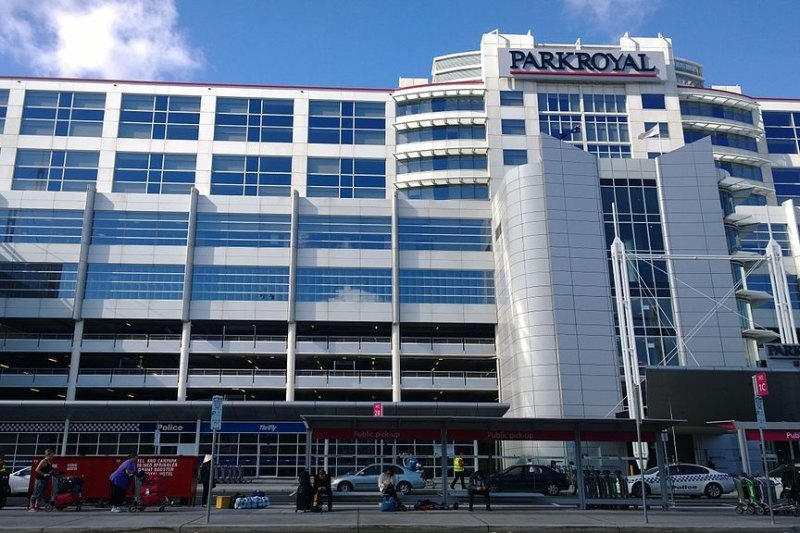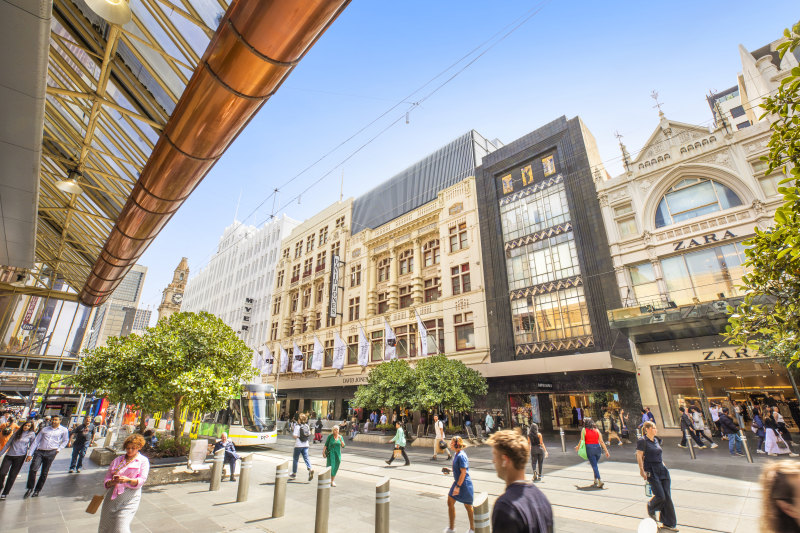
Accor readies Melbourne Airport hotel and co-working hub for take-off
Nearly five years after construction started, and more than three years later than originally planned, Melbourne Airport and accommodation giant Accor are putting the finishing touches on the precinct’s first international hotel project in over two decades.
Designed by architects Fender Katsalidis, the 10-storey development offers 464 modern guest rooms across two hotels – an upmarket Novotel and a more budget friendly Ibis Styles. They will open their doors on July 1 next door to the Terminal 4 car park.
The completion of these properties will mark the first new international hotel launch at the airport since the Hilton (now called the Parkroyal) opened its doors above the main multi-storey car park in 2001.
While the two new hotels will substantially improve the accommodation offering at the busy airport, the most eye-catching feature of new $230 million development (known as The Hive) is the futuristic structure hovering between them.

Called the Aerofoil, and resembling the aerodynamic shape of an aeroplane wing, the two-level building was originally meant to house the hotel’s pool and gym, but will instead be the first co-working hub to be operated by Accor in Australia.
Together with a health and wellbeing club and extensive conference and event facilities including a 330-person ballroom, these amenities are part of the evolution of airport hotels from somewhere for weary travellers to crash between flights to multipurpose venues catering to the diverse needs of the wider airport precinct.
“[Airport hotels] are no longer just about travel,” Accor Pacific chief operating officer Adrian Williams told The Australian Financial Review.
“This is a whole new integrated multi-use development catering to retail businesses, industrial occupiers, the new surf park and a whole range of other businesses [in the wider airport precinct],” said Mr Williams who replaced Sarah Derry as Accor’s regional boss in January.
Besides the airport, the 2741ha precinct at Tullamarine is home to Australia’s largest business park and one of only two urban surf parks. Owned and operated by Australia Pacific Airports Corporation (investors include Dexus, IFM and the Future Fund), it generates over a $1 billion in annual revenue and employs more than 20,000 people.
“Not only will the new-build hotels provide more choice for travellers seeking a place to stay, they will also offer a welcoming hub for the workers in the airport precinct,” Mr Williams said.
Accor, the country’s biggest accommodation group, will bring its “hospitality mindset” and hotel-like service to the new co-working hub, which could be the first of many.
Asked if Accor would look to roll out other similar co-working facilities across Australia, Mr Williams said the group was “always looking at opportunities”.
Globally, Accor already has deep connections to the flexible office sector through a business called Wojo (previously called Nextdoor) which it launched in 2017 in a joint venture with developer Bouygues Immobilier. That business has grown to 18 sites and 300 workspaces across Europe, though well below the 50 sites Accor said it intended to open by 2022.

First approved in 2019 and originally slated to be completed at the end of 2020, the dual-brand airport hotel project was paused at lock-up stage during the pandemic, but restarted in the 2023 financial year following the recovery in air passenger traffic.
Last financial year, 30.8 million people passed through the airport, a 138 per cent rise on the 2022 financial year and 18 per cent higher than 2019 pre-pandemic year.
“Melbourne is now Australia’s largest city, and these hotels are essential for the growing number of people visiting our city, many of whom need a night before or after a long flight,” said Stuart Verrier, Melbourne Airport’s head of property and asset development,
“But more than that, they also offer dining, wellness, conference and co-working facilities that provide a reason to come out to Melbourne Airport – even if you’re not flying,” Mr Verrier said.










